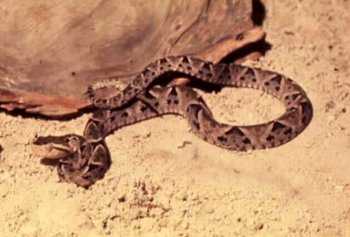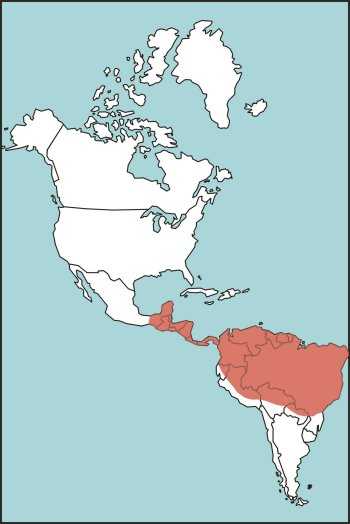Appendix E
DESCRIPTIONS OF VENOMOUS SNAKES
Fer-de-lance

Fer-de-lance
Bothrops atrox
There are several closely related species in this group. All are very dangerous to man.
Description: Variable coloration, from gray to olive, brown, or reddish, with dark triangles edged with light scales. Triangles are narrow at the top and wide at the bottom.
Characteristics: This highly dangerous snake is responsible for a high mortality rate. It has an irritable disposition, ready to strike with little provocation. The female fer-de-lance is highly prolific, producing up to 60 young, all with a dangerous bite. The venom of this species is hemotoxic, painful, and hemorrhagic (causing profuse internal bleeding). The venom causes massive tissue destruction.
Habitat: Found on cultivated land and farms, often entering houses in search of rodents.
Length: Average 1.4 meters (5 feet), maximum 2.4 meters (8 feet).
Distribution: Southern Mexico, throughout Central and South America (Figure E-13).
Figure E-13. Fer-de-lance Habitat
Survival index
All text and images from the U.S. Army Field Manual 3-05.70: Survival.
Appearance of the materials from the U.S. Army Field Manual here does not constitute or represent endorsement by probablyhelpful.com.
ProbablyHelpful.com is not responsible for inaccurate or outdated information provided by the U.S. Army Field Manual 3-05.70.

